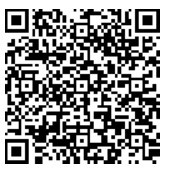

As most of you know by now, the ACCME (and JA) require that – when determining mitigation strategies for relevant financial relationships – you distinguish if the stock is publicly traded or if it is from a privately held company. In and of itself, this process is onerous for most CE providers. Before moving on, we want to clarify this rule:
PUBLICLY TRADED VS PRIVATELY HELD STOCKS
If a person that is affecting the content of a CE activity owns stock in a PUBLICLY TRADED ineligible company (“publicly traded” means a company whose ownership is organized via shares of stock which are intended to be freely traded on a stock exchange or in over-the-counter markets. A public company can be listed on a stock exchange, which facilitates the trade of shares, or not) stocks they own are considered a normal financial relationship and are mitigated in the standard way most providers, which is normally to have the slides of a presenter reviewed by a non-conflicted reviewer or by having a planner paired with another nonconflicted planner who makes all of the decisions. But if that person owns stock in a PRIVATELY HELD INELIGIBLE COMPANY, ACCME considers those stock holdings to be the same as ownership of the company. In other words, those persons would be excluded from participating in CE (unless one of the three exceptions to this rule can be met).
WHAT ABOUT STOCK OPTIONS?
“Stock Options” are defined as contracts to purchase stock in the future at an agreed-upon price.
The ACCME has stated state that if you have determined that a company is ineligible, and an individual has stock options with a publicly traded company, we would not consider that individual to be an owner, but we would consider them to have a financial relationship which may need to be mitigated and disclosed if the CE content they are controlling is related to the products or business lines of their company.
By contrast, if an individual owns stock in a privately held company, ACCME considers that individual to be an owner of the company who must be excluded from controlling content outside of the exceptions to Standard 3.2. Further, the ACCME has stated that individuals who may be in a position to control accredited continuing education are expected to disclose all their financial relationships with ineligible companies within the past 24 months to the provider, including contracts to purchase stock at an agreed-upon price (stock options). As described in Standard 3, the provider is expected to determine if the relationship, in this case, stock options, is relevant to the educational content. If so, the provider needs to take steps to mitigate the relationship and disclose the relationship to learners.
An individual who holds stock options in an ineligible company is not considered an owner or employee of that ineligible company.
But, as described in Standard 3, the provider is expected to determine if the relationship, in this case, stock options, is relevant to the educational content. If so, the provider needs to take steps to mitigate the relationship and disclose the relationship to learners. Or, to state this another way [from the ACCME] “If an individual has stock options with an ineligible company that have not been exercised, we consider them to have a financial relationship with that company which, if relevant, would need to be mitigated and disclosed in keeping with Standard 3.”
To summarize:
- Stocks from a publicly traded ineligible company whose products are relevant to the content of a presentation or the activity itself and held by persons that affect the content of a CE activity must be mitigated and disclosed to learners per normal procedures.
- Persons that own stock from privately held ineligible companies relevant to the content of a presentation or the activity are considered to be owners of that company. As such, they are ineligible to participate in CE activities and must be excluded (except when one or more of the exceptions to this rule are valid).
- Ownership of stock options – exercised or not – are considered to have a financial relationship with that company, which, if relevant, must be mitigated and disclosed to learners regardless of whether the company is publicly traded or privately held.
Please note that there are a number of potential “what ifs” that you might encounter, such as if the company is acquired, the stocks are sold, and/or the company goes public etc. Please contact us when such unusual situations occur.
WHAT IF THE STOCK OPTIONS ARE FROM A START-UP?
A question has arisen as to whether a person with a financial relationship with a PRIVATELY HELD startup should be excluded from CE. The ACCME definition of a “startup” is a company that has begun the governmental (FDA) regulatory process for a product in development.
The question is whether a presenter who has a relationship with the company can have a role in an activity. The ACCME has provided clarification about this question by stating that “it would not have any bearing on determining whether an individual is an owner of that company.” In other words, ACCME is taking a broad brush to this issue and erring on the side of caution by including financial relationships with such companies. This is true whether the company is privately held or publicly traded.
We know these issues are complex, and we hope this Client Advisory has clarified them. If you have questions, please reach out to Steve Passin at passin@passinassociates.com.









